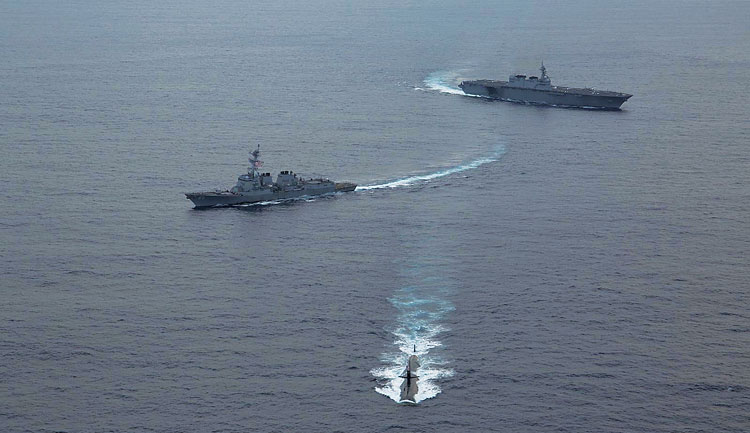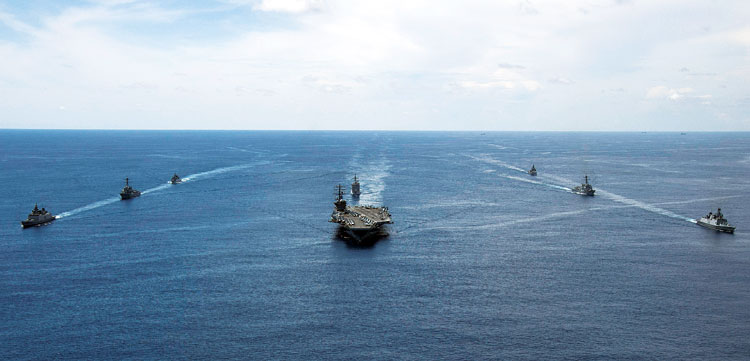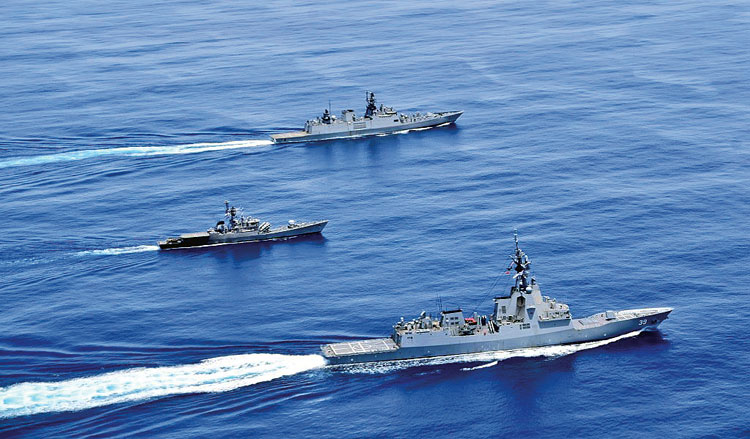INDIAN ARMED FORCES CHIEFS ON OUR RELENTLESS AND FOCUSED PUBLISHING EFFORTS

The insightful articles, inspiring narrations and analytical perspectives presented by the Editorial Team, establish an alluring connect with the reader. My compliments and best wishes to SP Guide Publications.

"Over the past 60 years, the growth of SP Guide Publications has mirrored the rising stature of Indian Navy. Its well-researched and informative magazines on Defence and Aerospace sector have served to shape an educated opinion of our military personnel, policy makers and the public alike. I wish SP's Publication team continued success, fair winds and following seas in all future endeavour!"

Since, its inception in 1964, SP Guide Publications has consistently demonstrated commitment to high-quality journalism in the aerospace and defence sectors, earning a well-deserved reputation as Asia's largest media house in this domain. I wish SP Guide Publications continued success in its pursuit of excellence.
- MoD initiates comprehensive review of Defence Acquisition Procedure 2020, pushes for defence reforms
- G7: The Swansong
- Kalinga Connect: South Asia to Polynesia
- Advanced MRSAM for India for a greater firepower
- Must Credit DRDO for Operation Sindoor, now what is next for defence R&D?
- Operation Sindoor | Day 2 DGMOs Briefing
- Operation Sindoor: Resolute yet Restrained
INDO-PACIFIC
China’s Saber-Rattling on Indo-Pacific is Alarming
The Indo-Pacific region has emerged as a key theater of engagement with the return of great power competition. China’s increasingly assertive behavior in the region based on their growing capability and influence across the Indo-Pacific raises pressing questions for Indian and the US strategy in the region and how they can best respond.

The term ‘Indo-Pacific’ has rattled the Chinese security establishment ever since and also the state funded think tanks. Every discussion revolves around IPS (as is the acronym for India Pacific Strategy in China). It would be interesting to understand their views on this initiative of the US.
Economic relevance and geopolitical significance have drawn attention of the world towards Indian Ocean and the Pacific. US, Japan, India and Australia have increased their Naval Cooperation for securing the sea lanes of communication over these oceans. It is in this context that the Chinese have proposed China Pakistan Economic Corridor (CPEC) and China Myanmar Economic Corridor (CMEC). The Chinese believe that these two are pillars to its expansion in these oceans and littorals which has been furthered by Belt Road Initiative (BRI). Though, in the Chinese writings, it has often been stressed that BRI is an economic endeavor, the regional countries have viewed the development of ports, communication etc for logistics support becoming power projection tools down the line. In the opinion of the Chinese, US push for IPS is primarily to offer more beneficial alternative to regional countries, in a sense it is counter to the BRI. Revival of Quad and passage of Asia Reassurance Initiative Act (ARIA) into law by the US for developing long term strategic vision and comprehensive, multifaceted and principled US policy for Indo Pacific Region and for other purposes is really a counter to the BRI.
Beijing has also assessed that China’s diplomatic outreach and political influence in the region is being perceived by regional countries like Japan, India and Australia as power imbalance and therefore their coming together for IPS or Quad. However, IPS being perceived differently by partner countries has lead to its slow progress.
Majority of think tanks in China are of the opinion that Indo Pacific Strategy will adversely affect China’s economic, military and strategic interests particularly the BRI and therefore Chinese countermeasures are compulsory.
Beijing has assessed that China’s diplomatic outreach and political influence in the region is being perceived by regional countries like Japan, India and Australia as power imbalance

- Chinese believe that India has not adjusted to China’s inroads into the Indian Ocean since it considers itself leader of the Indian Ocean. Though the Chinese have refrained from the nomenclature “Strategic Autonomy” for India it regularly refers that India does not like to be dictated by any other country in its backyard. China believes it is ‘Raj Legacy’ left over by colonial British. It doesn’t take into account the maritime combat power that India has developed over years, possibly such statements are for its domestic audience. It also projects ASEAN as benign conglomeration of countries who tend to broker stable balance of power by means of bilateral and multilateral engagements. China foresees two challenges in the Indo-Pacific:
- US preventing China from obtaining absolute power in the Indo Pacific region including South China Sea and IOR. Permitting China would lead to China enjoying overwhelming advantages on maritime issues, domination on regional economic development and any discourse on regional security and rules of the road for economic activities (obviously it does not imagine that India has the might to prevent it from doing so).
- IPS permits US to maintain control of SLOCs and regional economic agenda. US is heading to create quadrilateral security mechanism in order to deal with possibility of China gaining overwhelming military advantage and exclude US from regional economic and security order building.
Revival of Quad and passage of Asia Reassurance Initiative Act (ARIA) into law by the US for developing long term strategic vision for Indo Pacific Region is really a counter to the BRI

The second challenge in reality expresses the Chinese desire to form a regional economic and security architecture in the Indo Pacific and more specifically Indian Ocean Region when it perceives military superiority over US/India combined. Chinese think tanks often refer to Military Strategy paper of 2015 which states that China will secure the trade routes internationally by deploying and basing PLAN. China’s economic interests need to be protected overseas.
This must ring alarm bells in US and India particularly. While ASEAN would take no sides, in effect it would be supportive of China. Sri Lanka may use its neutrality hedging and permit Chinese warships transit on pretext of security of SLOCS. On the west it has Pakistan and possibly some African peninsular countries which are by and large dependent on China.
Possibly time has come to put in place an architecture in the IOR and larger Indo-Pacific to ensure free and open trade routes, overflights and rule based order as they exist. Any delay could make democracies stare at fait accompli.
The Author is former Chief of Integrated Defence Staff. A naval aviator of fighter stream, he has flown over 2700 hours and steered naval aviation acquisition as the Assistant Chief of Naval Staff. He retired in 2014 as the Flag Officer Commanding-in-Chief of the Western Naval Command.





